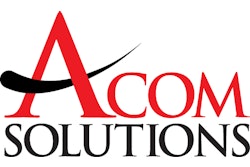Advances in key technologies driving move to "dynamic customer relationship management," Yankee Group reports
Boston — January 22, 2004 — Advances in key technologies are driving a shift from internally focused customer relationship management toward customer- and partner-facing CRM, and enterprises should consider upgrading their CRM systems in the next 12 to 18 months to take advantage of this evolution, according to a new research note from technology consultancy Yankee Group.
To date, companies have been primarily focused on automation of core or internal operations, such as direct sales forces, marketing departments and internal call centers. However, CRM software is in the midst of a significant evolution, similar to the client/server shift of the mid-1990s, Yankee reported, and new initiatives, based on automating external processes that drive sales and service, are absorbing budget dollars traditionally allocated to core IT spend.
The move to what Yankee is calling "dynamic CRM" implies that the business process drives an interaction and can leverage both external and internal data, both real time and historical. The development of dynamic CRM is contingent on the emergence of applications resulting directly from the convergence of four trends: composite analytic applications, Web services, J2EE and XML.
These technologies enable the assembly, distribution and management of application and technology solutions, in a way not possible before, to improve sales effectiveness, customer interaction and the end-user experience. These technologies can help companies optimize "edge of the enterprise" — or externally facing — applications to create a personalized dialogue between the company and each customer, consistently delivered at the most opportune time, according to Yankee.
Impact on Technology Investments
The demand shift from the core to the edge of the enterprise will have a profound effect on enterprise business-application infrastructure requirements and spending plans, Yankee believes. The consultancy's research found that 71 percent of companies have increased investment in edge-of-the-enterprise technologies. The portion of the budget allocated for these technologies grew 75 percent on average, while the overall IT budget grew only 3.7 percent.
Examples of dynamic CRM projects underway include those in the pharmaceuticals sector, where pharma companies are allocating dollars for physician and consumer portals. Elsewhere, telecommunications, retail and consumer packaged goods companies are focusing on improved dialog marketing, self-service and partner management.
However, while many companies have discussed the move toward edge spending, there has only recently been a true shift in IT dollars. Few enterprises were technically or organizationally prepared to embrace true dynamic customer relationship management (CRM) for customer-facing initiatives, since many client/server CRM applications made it technically challenging to extend processes and functions beyond the four walls of the enterprise.
Solution Providers Landscape
Yankee believes that many enterprises are not looking to traditional CRM vendors to support new corporate initiatives. The consultancy asserts that content management and portal vendors — such as ATG, Vignette, BEA and WebSphere — have an advantage in delivering on the vision of dynamic CRM because they provide applications that can offer in-context information more dynamically, from multiple internal and even external systems. Critical functionality includes flexible content and data integration, exposed metadata, taxonomy and natural language search and pure Web architectures.
Best-of-breed partner relationship management vendors that have moved their applications to J2EE architectures and support multi-tiered interactions across multiple enterprises also will benefit from this trend, according to Yankee. "Enterprises that are serious about managing their indirect channel more effectively must select and implement applications from vendors such as ChannelWave, Comergent and Haht Commerce," the consultancy writes.
In addition, Yankee predicted that vendors in this market that moved beyond historical or operational data analysis based on pre-built models, towards real-time, multi-channel interactive communications will begin to win more budget dollars. Vendors in this space include Teradata, Epiphany, Chordiant and Unica.
Finally, since edge applications rely on multiple heterogeneous systems and have heavy integration requirements, vendors that not only assist with application integration needs but also aggregate customer activity data from a variety of transaction and analytical systems will benefit. Customer data integration technologies enable a comprehensive customer view that can be embedded as part of an existing business process that triggers the best course of action for elements such as alerts, events and recommendations.
Recommendations for Enterprises
What's an enterprise to do in the face of this move toward dynamic CRM? Yankee believes that companies should upgrade their CRM system within the next 12 to 18 months. "Moving to the most current version of SAP, Siebel, Oracle or PeopleSoft will make it easier to externalize data locked away in traditional client/server architectures," the consultancy wrote.
In addition, companies should leverage their existing investments in analytic and content management tools. "For example, Teradata is not just a data warehouse vendor and Vignette is no longer just a content management vendor," Yankee wrote. "These vendors offer packaged technologies that enable dynamic dialog with customers."
And finally, Yankee warns against just providing a 360-degree view of the customer through data integration. "Make the view more valuable through actionable and relevant alerts, recommendations and triggered business processes," the consultancy advised.











